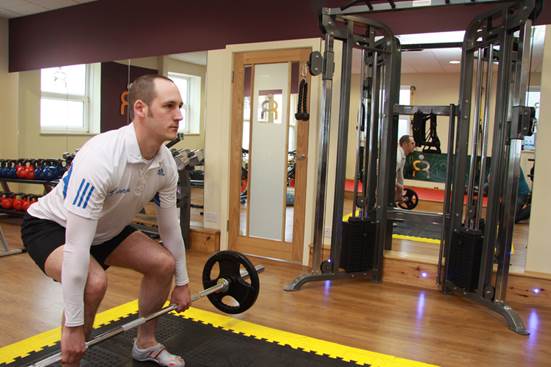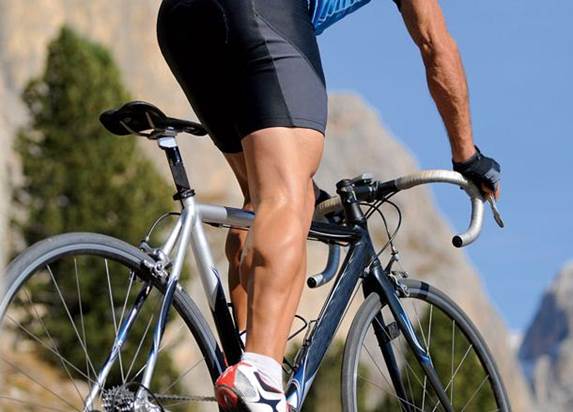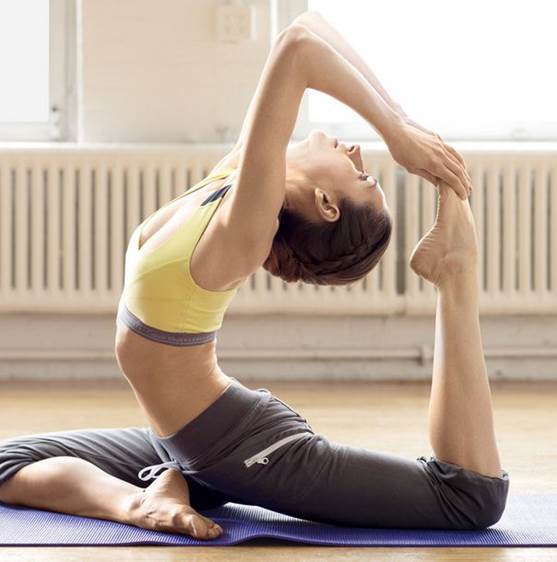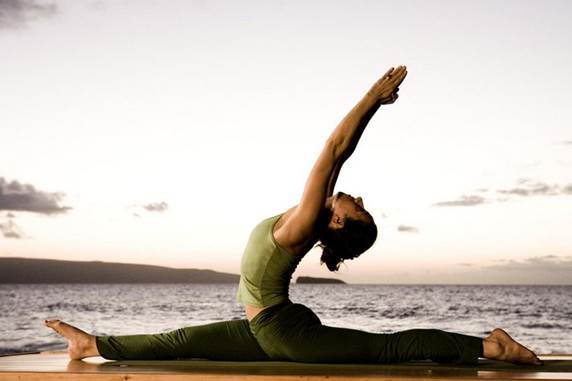If you have the animal instinct to
train like a predator, over-come preconceived limitations and eat like a
caveman, you may just have found your new sport! We take a look at the journey
her husband Jon has taken, and the personal and physical attributes required to
be a top exponent in the world of gym sport.
Cross-training
The combination of resistance and CV
training methods to develop all-round fitness. The exercises and equipment used
are found/can be done in the gym.
Gym sport
Developing great all-round fitness through
cross-training and putting it to the test in cross-training events and
challenges.

Gym
sport
The beginnings…
At 45 Jon leads an active life as a Royal
Marine, family man and is classed as a veteran gym athlete. As a regular ‘sport
Billy’ all his life he has played most sports and like many men spent the
majority of his adult life performing hypertrophy (muscle growth) sets on the
gym floor without much direction or a clear idea about training principles.
This all changed in 2008 when Jon completed his civilian personal training
qualification. It was at this time that he understood the importance of
periodization (training planning) for competition and that energy systems and
metabolic training could dramatically improve his performance, along with the
need to vary exercise routines to continually improve.
Jon knows his weaknesses and will often
comment for example, that his legs don’t have the speed – he’s acutely aware
that speed hill running (a key gym sport event) is his weakest area in
competition. This understanding has enabled him to work on gaining valuable
seconds in other components to outweigh his weaker area. He believes that we
often neglect areas such as flexibility and that physical ability is 10%
genetic, the rest is all mental and strategic!
The Advanced Gym sport Athlete
Determining whether to compete at
intermediate or advanced level is based on your estimated performance time over
a gym sport challenge. However, no matter whether you are a beginner or an
advanced gym sport athlete the F.I.T.T (frequency, intensity, time and type)
principles combined with a balanced lifestyle are crucial in terms of devising
a relevant winning training regime.

The
Advanced Gym sport Athlete
Training Demands
To compete at high intensity levels it’s
necessary to train all energy systems. This will ensure that the gym sport
athlete is competent in all of the complex requirements of the average
competition circuit - which demands muscular endurance in all weighted and
cardiovascular exercises and an underpinning of speed, which will be the
deciding factor of your ranking.
Nutrition/Hydration/Ergogenic aids
We all know the rules of eating clean,
opting for natural ingredients and fresh, over frozen produce as optimum for
physical development and recovery. Many gym sport athletes who train at high
levels find that the use of natural supplements support. Hydration is also
crucial to recovery and performance and this must contain protein and carbs
when consumed in and around the training environment in particular. Milk or
flavored milk with its 4-part carb to 1 part protein ratio is highly useful for
those in this respect who are not lactate intolerant.

We
all know the rules of eating clean, opting for natural ingredients and fresh,
over frozen produce as optimum for physical development and recovery.
Lifestyle
Gym sport athletes, like other athletes
must live a healthy, stress-reduced lifestyle - taking a holistic and realistic
approach to life is the way forward.
Frequency
To be able to maintain an overall
development of all the required fitness and health related components the
advanced gym sport athlete needs to follow a periodical training regime. The
pre-event monocycles (training periods lasting 4-6 weeks) demands six days a
week training and an intensity and frequency taper in the final micro-cycle (7
– 10 days training period). On average, the emphasis tends to be on intensity
over frequency.
Intensity
To increase V02max (maximal oxygen uptake)
and lactate threshold (the point at which the body switches from producing
energy aerobically to anaerobically) the advanced gym sport athlete needs to
train up to max heart rate, however, he also needs the aerobic endurance
ability (gained through lower heart rate level training) to recovery quickly.
As with a middle-distance runner a big aerobic base is required for the
production of higher power anaerobic outputs.

As
with a middle-distance runner a big aerobic base is required for the production
of higher power anaerobic outputs.
Resistance training demands are high
repetitions and a mixture of endurance, strength and hypertrophy training -
therefore a varied all-over body regime will benefit the gym sport athlete and
enable them to be dynamic in competition.
Other Training
Added training ingredients include, tire
flips, yoga and swimming in Jon’s case and they are an integral part of his
training schedule. A determination to challenge the body and mind through
different mediums is equally essential to keep the personal excitement and
motivation of training and competing and wanting to progress going.
Time
Depending on the activity training sessions
take any where between 45min and 2 hours a day, but as is stressed the time
taken to rest and recover is just as, if not more important.

Added
training ingredients include, tire flips, yoga and swimming in Jon’s case and
they are an integral part of his training schedule.
Example Competition Circuit template
1. Row: 750m
2. Shoulder press: 40kg x 50
3. Sit ups: 100
4. Upright Row: 30kg – 50
5. Bike: 2k
6. Pull ups: 30
7. Step ups: Carrying dumbbells 20kg x 100
8. Fireman’s walk: Carrying dumbbells 30kg
x 80m
9. Run: 800m @ 6%
10. Chest press: 50kg x 50
The following workouts are examples of the
types of training that Jon completes. Alongside these grueling workouts Jon
also swims, runs, and does at least one muscular strength session per week.
Workout one:
Cardiovascular session
·
Bike - level 10 @ 110-115 rpm; 2km/treadmill @
6% gradient -13kph for 1km 2min rest
·
Bike as above – 1.5km/treadmill @ 6% gradient -
14kph for 800m
·
2min rest
·
Bike as above – 1km/treadmill @ 6% gradient –
15kph for 600m
·
2min rest
·
Bike as above – 500m/treadmill @ 6% gradient –
16 kph for 400m
·
Repeat in reverse order with 3min rest between
rounds.
Workout Two:
Strength Endurance Complex session
·
6 x Deadlift
·
6 x Bent Over Row
·
6 x Front Squat
·
6 x Push Press
·
6 x Back Squat
Do exercises in a row without letting go
of the bar
·
Rest 1-2min and repeat 3-4 times
·
Increase weight on Olympic Bar with each series
i.e. 10kg/20kg/30kg/40kg
·
3 x rope climbs using arms only
·
Bench press at body weight + burpee superset
·
10/1, 9/2, 8/3, 7/4, 6/5, 5/6, 4/7,3/8 ,2/9
,1/10
·
Step ups low box
·
4 x 30sec work/30sec rest with 2 x 15kg/20kg dumbbells
Do these all
without letting go of dumbbells.
- Push Press:
- 2 x 15kg/20kg dumbbells.
- 4 x 30sec work/30sec rest - rest in overhead position
Workout Three:
Cardiovascular/Speed session
·
Row: 5 x 30sec work x 30sec rest
·
Grappler: 5 x 30sec work x 30sec rest
·
Bike: 5 x 30sec work x 30sec rest
·
Row: 5 x 30sec work x 30sec rest
·
Punch Bag: 5 x 30sec work x 30sec rest
·
Bike: 5 x 30sec work x 30sec rest
You can have all the kit, heart rate
monitors, wacky trainers, the latest gizmos and gadgets, but without the mind-set
to train like a machine, perform like a fighter and accept your weaknesses as
areas for growth, gym sport is probably not for you. But if you have the animal
instinct to train like a predator, over-come preconceived limitations and eat
like a caveman, you may just have found your new sport!

But
if you have the animal instinct to train like a predator, over-come
preconceived limitations and eat like a caveman, you may just have found your
new sport!